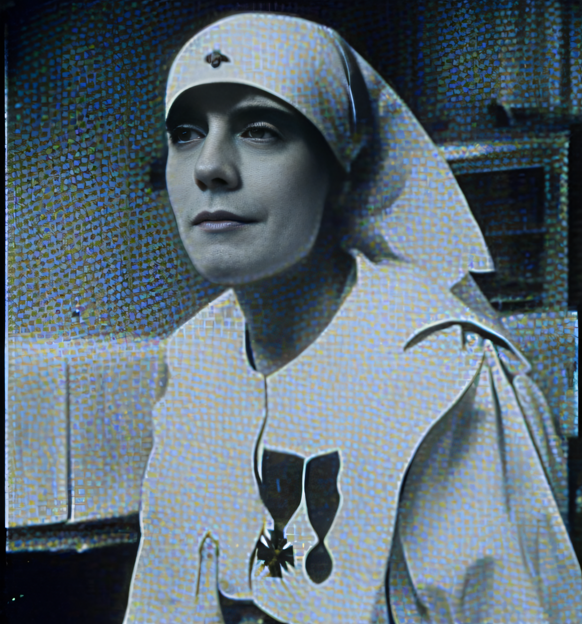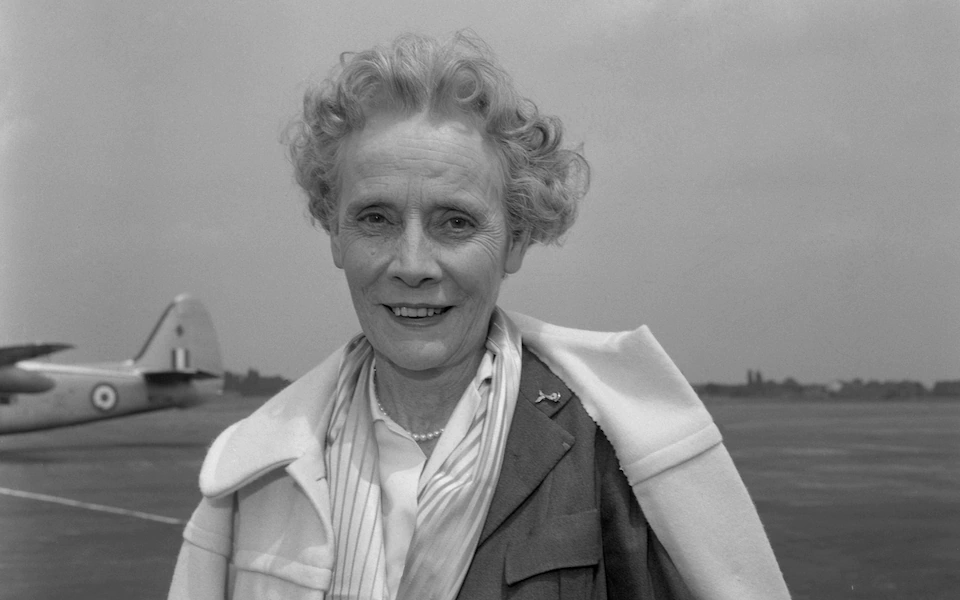Her real name was Ghita ‘Mary’ Lindell, preferred name was Gertrude Mary Lindell, but her code-name was ‘Marie-Claire’. Some knew her as the Comtesse de Millville or Comtesse de Moncy. Another title was ‘The Nazis most wanted woman’. She was the fearless woman who organised and led the ‘Marie-Claire Line’ responsible for rescuing hundreds of Allied soldiers from occupied France during World War II (WWII).
Mary Lindell could not have had any inkling of the trials, tribulations and triumphs her life would hold when she was born in Sutton, Surrey, United Kingdom on 11 September 1895. As war broke out in 1914, she joined the Voluntary Aid Detachment. Her first task was the cleaning of bedpans but when the Matron complained her performance was less than perfect Mary demonstrated the spirit and boldness that would define her, by simply tossing the soiled brush to the Matron. She was dismissed. Fiercely determined to serve, when the roles afforded to women were scarce, she travelled to France and joined the Secour Aux Blesses Militaires, a division of the French Red Cross. Mary quickly found herself accompanying a surgeon into the filth and carnage of the Western Front. After the French retreated she remained at a field hospital. She was then only 23.

By 1918 she had moved to the First French Army and the Ambulance Douze-vingt-huit, based in the Meaux convent and carried out duties as an anaesthetist. She was awarded the Croix de Guerre. She had already received the Tsarist Order of St Anne for treating Russian soldiers. Whilst near Verdun Mary was partly gassed and evacuated to Brittany to recover. It was here she met the Comte de Milleville and they married in 1919.
At the outbreak of yet another European war Mary Lindell was in France, the mother of Oky, Barbe and Maurice, but without hesitation rejoined the French Red Cross. For reasons unclear authorities did not desire the services of the Comtesse. By 1940 the French Red Cross had all but disappeared as the German army closed in on Paris. Mary learnt a convoy of ambulances full of the injured needed to be evacuated. She did not hesitate and escorted the ambulances out of the French capital just hours before the Germans entered Paris on 14 June 1940. Handing over the patients to the Vichy French she then devised a plan to rescue remaining French soldiers. With the help of her son Oky and a friend Michele the escape route to the French/Spanish border was established.
British authorities approached Mary to ask if she could assist in repatriating British soldiers. The remnants of the French Red Cross then asked if she could escort stranded children over the border. The confident Mary approached a Russian Prince with whom she was acquainted with this appeal. He in turn introduced her to General von Stupnagel, the Military Governor. Her charm and guile secured passes for herself, one nurse, one child and one mechanic to travel across the border. She ensured the mechanic remained mute should the party be stopped and questioned and each day a there was a different ‘mechanic’. None returned with her to Paris. The number of evaders rose but German suspicions were aroused. Mary simply changed her route and with the help of her two teenage sons now delivered British military men to border farms. This soon became known as the ‘Marie-Claire Line’.

Regardless of precautions, increased activities within her Paris flat were noticed and during the Christmas 1940 the Gestapo unceremoniously threw her into prison. The interrogation was harsh, but she continued to deny any involvement. Mary was sentenced to two and a half years hard labour. Included in her offences was calling the German interrogator ‘swine’. Released due to ill health nine months later, Mary had turned 50. The Gestapo returned and again incarcerated her this time while she was in hospital receiving treatment. Mary slipped past the guard and hid until her son Oky could get her on a train out of Paris. It was the last time she would see him. Oky was taken into custody by the Nazis and never seen again. He had refused to give up his mother’s whereabouts. A death warrant was issued for Mary but through her own network she escaped first to Spain and then London.
M19 approached and asked if she would return to Europe and establish another escape route to assist the increasing number of downed Allied airmen to evade capture. Mary willingly agreed and after a course in coding was back in France. Mary was badly injured when a vehicle hit the bicycle she was riding and during her secret convalescence her son Maurice continued the work. Moving constantly to avoid detection sapped her energy and then she heard Maurice had been captured by the Gestapo and tortured to reveal his mother’s whereabouts. The thought that her remaining son would suffer the same fate as her first was hard to bear.
Her daughter Barbe took the lead. Female charm and a substantial bribe secured Maurice’s release. After ensuring he received medical attention Mary continued her work attempting to stay one step ahead of the Gestapo. Finally, her luck ran out. Mary waited on a railway station awaiting the arrival by train of several rescued British airmen. Unfortunately, inspectors had realised their papers were forgeries and altered the Gestapo. Mary was arrested. She attempted to reassure them she was really Comtesse de Moncy, a Red Cross inspector but this time her attempt at subterfuge were unsuccessful. Mary then became ill and asked to go to the toilet. She crawled through a window but was seen. The guard opened fire and Mary was shot in the cheek and the base of her skull. Although her survival was considered unlikely, she was taken to a Luftwaffe hospital where a surgeon painstakingly reconstructed her skull and the base of her neck. Recovery was slow and she moved to avoid rescue. As Allied armies advanced Mary Lindell was shipped to the notorious Ravensbruck concentration camp. By February 1945 camp conditions were so dire 120 women were dying every day. Mary was placed in a section to be executed but the SS doctor moved her into another section and saved her life. It seemed even hardened SS doctors appreciated this courageous, strong minded, resourceful woman.
The ‘Marie-Claire Line’ covered a large area, secreting evaders to safe-houses in Paris and then the Ruffec area. She received her second French de guerre medal. Mary was personally responsible for returning over 100 Allied soldiers and airmen to England. Regardless, she was ignored by those within the British hierarchy. It was not until 1969 that she was finally awarded the Order of the British Empire for her work in rescuing British airmen. The amazing Mary Lindell, ‘Marie-Claire’, Comtesse de Millville; outlived her husband and two of her three children and died in Paris in 1986 aged 92.

